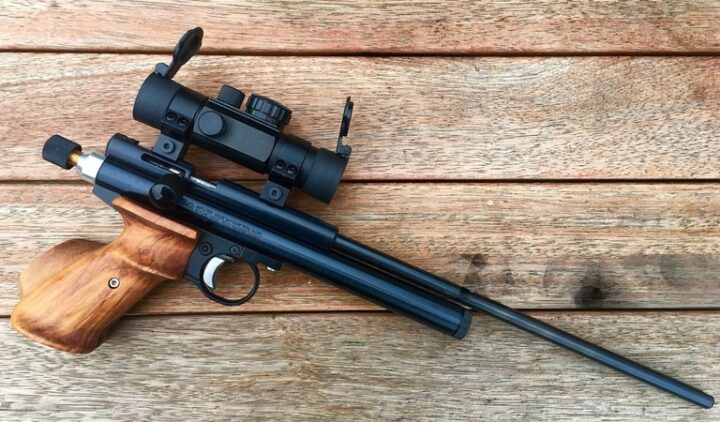Can airguns be used for self-defense?
The topic of gun ownership for self-defense has brought a huge debate and for good reason. While some people consider it their constitutional right to own a gun to protect themselves. Others look at the potential adverse effects on public safety a real, traditional gun can cause.
But what if there was an alternative that provided these rights without the same level of consequence? What if there was something that added cost-effectiveness in ownership as a cherry on top? Enter airguns – a less-lethal option that is gaining traction in the self-defense market.
While others may not see them as a viable option, the airgun has truly evolved from way back during our childhood days, when they were only considered good for plinking beer cans. The modern airgun can deliver a significant amount of force coming very close to that of a real gun.
But is the airgun truly an effective self-defense tool? Can it hold its own in a threatening situation? This article dives into the capability of the airgun for self-defense and looks into both its advantages and disadvantages
Types of Airguns for Self-Defense
There are different types of airguns out there mainly classified by how they can acquire and use the air to propel the projectile.
Spring-piston airgun
Just like its name suggests this one uses a spring and a piston to compress air that is released to propel a pellet forward. One of the significant advantages of this type is that it is self-contained and doesn’t need any external inputs apart from the manual compressing action to generate the power for shots.
On the contrary, despite its simplicity of use, the internal components such as the spring and piston contribute to added weight which may be uncomfortable for some users.
These types of airgun generate a significant amount of force enough to hunt small game and deter attackers when used for self-defense
CO2 (carbon dioxide)
These pistols use disposable CO2 cartridges to propel the pellets with a high level of force. They are compact, easy to handle, and provide enough power to effectively deter or incapacitate an attacker, although the force is slightly less than that from a spring piston
Variable pump
This is comparable to a spring piston, but it requires multiple pumps to provide the force for a shot. Full force may necessitate up to 10 pumps, however, it can still function with 5 or 6. This implies that the shooter can modify the force created for a shot according to their needs, which is its most significant advantage. The disadvantage is that reloading this airgun is slow, which can be costly in critical self-defense situations.
Precharged Pneumatic(PCP)
These airguns use pre-charged air tanks or external hand pumps to store compressed air, resulting in significantly higher velocities and greater stopping power. Their main advantage is power which results from their high compression. While they may be less practical for everyday self-defense, high-powered air rifles can be effective in certain situations where long-range accuracy or penetration is crucial.
Buying an Airgun for Self-Defense
There are several aspects that one should consider when looking for an airgun to buy;
The first thing is to think about how you intend to use it. this can either be close-quarters self-defense or long-range shots. A handgun is an ideal choice for close quarters, while a rifle with a higher power is what is needed for longer-range shots. CO2-powered handguns like the umarex Beretta M9A3 blowback Pistol may be the best for close quarters, but long-range requires something more powerful like a spring-piston or a PCP rifle. The Silverback Airsoft Desert Tech HTI is one example of a spring rifle that can handle longer ranges.
Another factor to consider is how easy it is to use and this mostly will depend on one’s level of experience with guns. Most beginners prefer something light and with good ergonomics for ease of handling. If unsure about what you want it’s good to test the airgun at a range before buying.
Safety features are another important consideration. Look for airguns with built-in safety mechanisms such as manual safeties, trigger locks, or automatic safety catches. These features help prevent accidental discharges and ensure that the airgun is only fired when intended. Additionally, proper storage and handling practices should always be followed to minimize the risk of accidents.
Safety considerations when using airguns for self-defense
While airguns are generally considered safer than real guns, it’s important to remember that they are still capable of causing harm. When using an airgun for self-defense, it’s essential to prioritize safety at all times. Treat the airgun as if it were a gun loaded with bullets, following the same safety protocols and handling procedures.
Keep your finger off the trigger until you are ready to shoot, and never point the airgun at anything you do not intend to shoot. Be aware of your surroundings and ensure that there is a safe backstop in case the pellet misses the target. Proper eye and ear protection should also be worn when necessary.
Benefits of Using Airgun for Self-Defense
Compared to the good old firearms counterparts, airguns bear the following advantages;
Lower cost-It’s easier and cheaper to live with an airgun as compared to a firearm. This is because the initial cost of acquiring an airgun is lower as are the projectiles used. There is also less legality at least in a majority of states when it comes to airgun use and ownership
Less noise-Airguns have less noise compared to fireams and while this may be a disadvantage if one wants to scare off an attacker it can be a great advantage if one wants to fire at an attacker without causing great attention.
See Also: why are guns loud
Less fatal-Compared to firearms most airguns do not permanently or seriously injure a target. This may make it an ethical method of self-defense and it settles the issue of public safety.
Disadvantage of an Airgun for Self-Defense
One of the biggest disadvantages of using an airgun for self-defense is that it does not have the stopping power of a firearm. Another issue is that they only allow for a limited number of shots before the air required for propulsion must be replenished. These two limitations might make the airgun rather unreliable, especially in extremely critical and high-stress situations.
FAQs
What are the laws governing the use of airguns?
This depends on the exact jurisdiction where the airgun is being used. Most states however do not consider the airgun a lethal weapon, although they do have regulations that govern its use.
This is because the airgun is still thought to be capable of causing injury, and can be used for criminal activity with an intent to scare the victim. The best way to know about the laws, however, is to consult a legal officer in your jurisdiction for guidance on the relevant laws.
Can I use an airgun to deter an intruder?
Yes, it’s very possible to use an airgun to deter an intruder, and it has happened on several occasions. Firstly, it’s not likely that the intruder will be able to differentiate the appearance of an airgun from a firearm and this may play to your advantage. Then, with the correct projectile and airgun, it can cause injury to the intruder causing them to flee.
Conclusion
Even though airguns can be used for self-defense, consider both the advantages and disadvantages as well as the legal implications and determine whether it’s worth it. It is true that airguns have developed and are no longer what they formerly were; instead, they are more capable.

